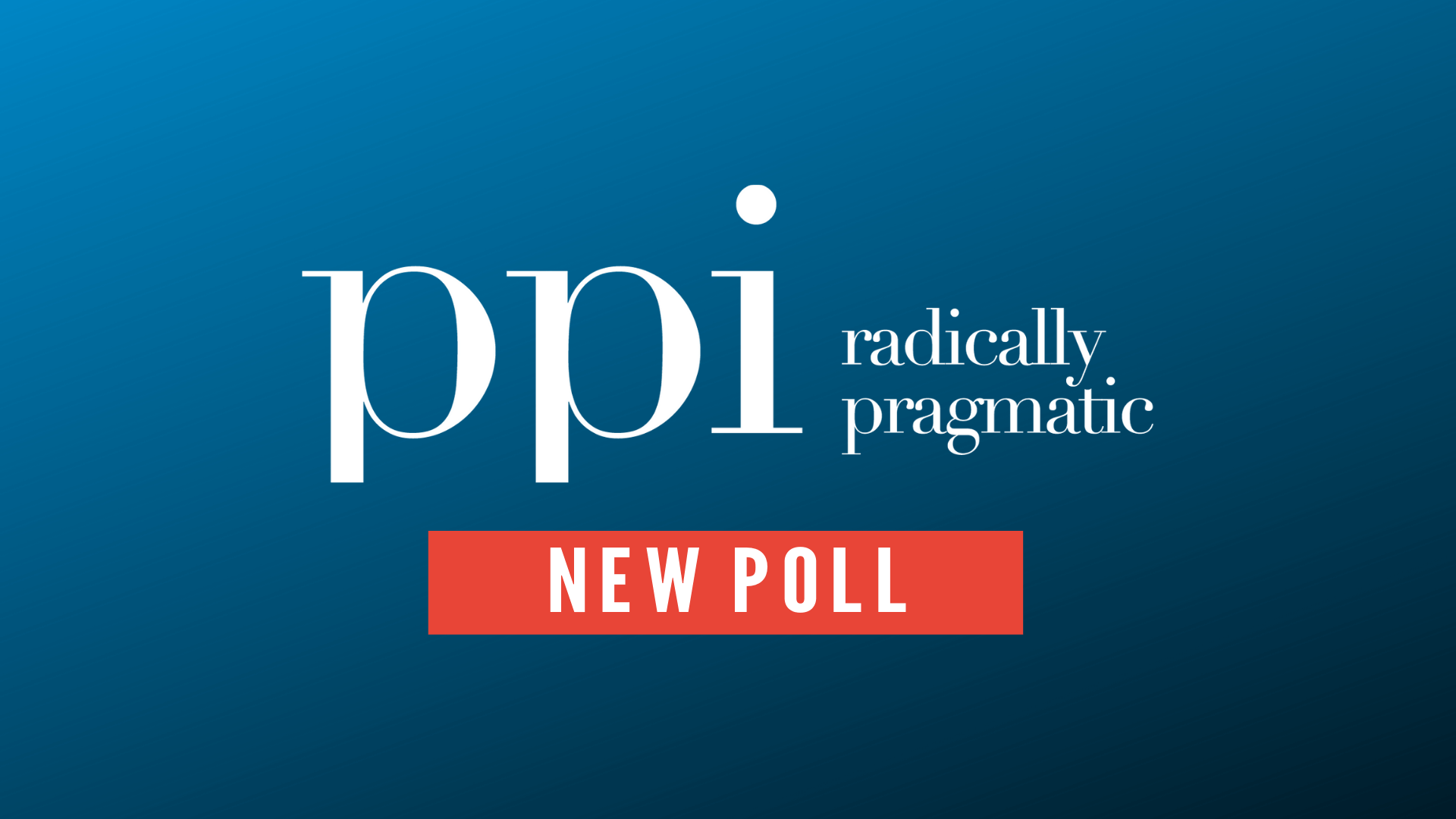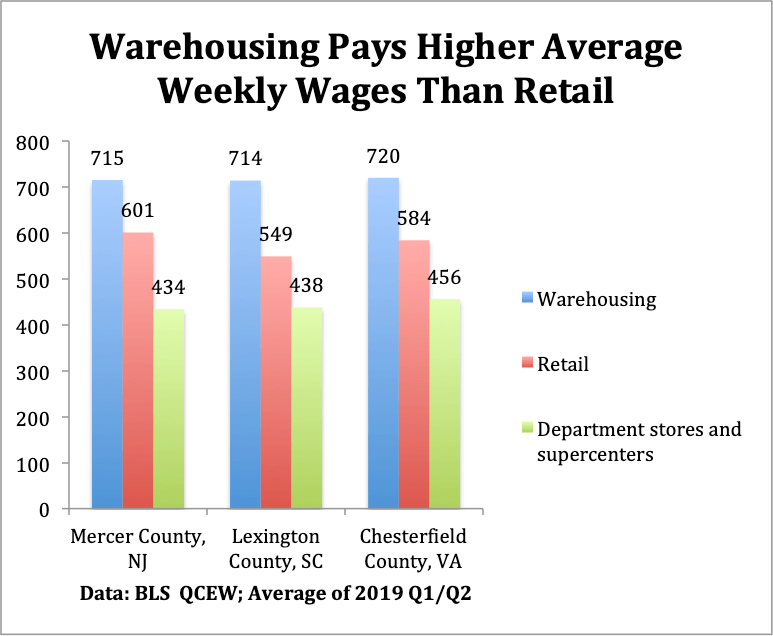
In the 2016 presidential election, Donald Trump lost the popular vote to Hillary Clinton by nearly three million votes. He won in the Electoral College by flipping states Barack Obama carried in 2012: Michigan, Wisconsin, Ohio, Iowa, Pennsylvania and Florida.
But while Florida and Ohio are bellwether states that swing back and forth, the bigger shock for Democrats was losing three states long considered part of their “blue wall” in presidential elections: Michigan, Wisconsin and Pennsylvania. These states put Trump over the top and could again play the decisive role in this November’s elections.
The battle for the Democratic nomination has revolved around the question of which candidate has the best chance of beating Trump. The more pertinent question is, which candidate can beat him in these critical battleground states – and thereby deny Trump the opportunity to steal another win in the Electoral College.
Because of their pivotal status, the Progressive Policy Institute commissioned a leading Democratic pollster and strategist, Pete Brodnitz, to conduct a poll of these three key states. His Expedition Strategies poll also focuses on swing voters (14 percent of all voters) in these states. These include those (8 percent of the electorate) who voted for Obama in 2012 and Trump in 2016, as well as those who voted for Mitt Romney in 2012 but voted for Clinton in 2016 or Democrat Congressional candidates in 2018.
This deep dive into three frontline states suggests that Democrats have an edge in Michigan and Pennsylvania, while Trump has an edge in Wisconsin. This conclusion is not based solely on looking at current matchups.
It is based on looking at the political dynamics that will shape the race, depending on whom Democrats nominate.
Up to this point, Trump has had the wind of a strong economy at his back, while a distracting debate over Medicare for All has blunted the sharp edge of the Democrats’ strongest issue – health care.
Among all voters in the battleground states, Trump scores positively on the economy and jobs and keeping America safe from foreign threats, and negatively on trade, his conduct as President and handling relations with U.S. allies.
The poll was conducted Feb. 6-18, before the dramatic stock market plunge triggered by fears of the Coronavirus pandemic. A bare majority of 53 percent then expressed confidence that the United States was prepared to deal with the virus. Obviously, public anxiety has intensified since then, as have worries about the economy.
Our poll finds that Democrats have yet to persuade 2016 swing voters to swing back in their direction. In matchups against Trump, three current candidates – Vice President Joe Biden, Sen. Bernie Sanders, and former Mayor Mike Bloomberg – have slender leads among all voters. Swing voters, however, generally favor Trump, with two exceptions: Bloomberg narrowly leads among swing voters in Michigan (42/40) and is tied in Pennsylvania (43/43). Trump strongly leads Bloomberg among swing voters in Wisconsin (32-47 Trump).
And while Trump’s job approval numbers among all voters are 12 points underwater (44-56 percent), swing voters split 50-50, and by 55-45 say that on the economy they trust Trump more than a generic Democratic nominee.
Who are the swing voters in these states? According to our survey, they are overwhelmingly white (83 percent); skew older (60 percent are 50 or above); and, are substantially more Republican and independent than Democrat-leaning. About half have college degrees and 53 percent identify as moderate, compared to 31 percent conservative and 16 percent liberal.
Like all voters, they say America is on the wrong track, rather than moving in the right direction (54-46), and by a substantial margin they identify health care as their most important issue. Our poll suggests there is room for Democrats to make inroads among these voters – with a pragmatic nominee who understands their outlook and interests.
What follows are key insights and takeaways for Democrats and progressives that emerge from this intensive battleground survey.
IT’S HEALTH CARE, STUPID
The poll’s findings on health care are particularly striking, and instructive for presidential and Congressional candidates.
Health care remains the top concern of all voters and swing voters. But the Democratic advantage on health care – so critical to the party’s gains in the 2018 elections – has been dissipated by the push for Medicare for All.
While all voters in these frontline states still credit Democrats with having a better approach (54-46), swing and undecided voters (11 percent of the electorate) pick Republicans by equal or larger margins. This suggests that the Democratic nominee faces an uphill climb here, especially if he or she is pushing single-payer or Medicare for All.
By better than 2-1 (69-31%), battleground voters favor changes that build on the current, public-private health insurance system to a single, government-run health plan.
That’s true too of Democrats, who favor the former by a solid, 18-point margin.
Voters are clearly troubled (78-22) by a switch to a government-run health care system that eliminates all private insurance plans, and they grow even more concerned when they learn it would require new taxes.
Most believe that having the government provide everyone’s health care would mean long waiting lists for medical treatment, a reduction in health care quality, and a rise in health care costs.
In 2018, Democrats campaigned successfully on protecting Obamacare from a Trump Republican campaign of sabotage. Remarkably, however, our poll finds that voters fear Democratic efforts to switch to a government-run plan more than (52-48) Republican attempts to kill Obamacare. In other words, months of argument among Democratic presidential candidates over Medicare for All has been turning what had been the party’s greatest strength into a political liability.
This fear is driven by voters’ assumptions about how their health care will be affected by Medicare for All. When asked if they expect the quality of care to get better, worse or not change under a federal health care plan, just 17% expect the quality of care to get better, 56% expect it to get worse and 27% expect no change. Senator Sanders tells voters that taxes will rise on some, but health care costs will go down.
But when we asked if “the cost of the healthcare you receive” would get better, worse or not change under a Federal plan, 29% believe it will get better, 51% expect it to get worse and 20% do not expect a change. Even among Democrats, 35% expect costs to get worse and 24% expect no change (42% expect costs to get better).
All voters express a strong preference (74-26) for giving everyone the choice between government coverage or private insurance over Medicare for All. By similar margins, voters also prefer an idea PPI has proposed – capping the prices that doctors and hospitals can charge for medical services – to Medicare for All.
In short, what stands out in this poll is a public leery of banning private coverage and lacking confidence in the government’s ability to manage a universal Medicare program effectively and efficiently. This poses a special challenge to Sen. Sanders, the idea’s most fervent proponent. His supporters point to exit polls in small turnout caucus states like Iowa and Nevada that showed Democrats favoring Medicare for All. But those electorates were small and dominated by left-leaning activists.
Our poll shows that Medicare for All is more likely to run into a wall of voter skepticism in the battleground states.
ECONOMIC REFORM BEATS REVOLUTION
Voters strongly approve Trump’s handling of the economy, 58-35. Swing voters are even more upbeat, approving by a 38 point-margin. Just 6% of Democrats approve of the job Trump is doing but 25% approve of his handling of the economy.
Asked how they feel about the U.S. economy’s future, or their own, only 9 and 8 percent of voters respectively say they are “angry.” While slightly more say they are anxious than optimistic, it’s hard to find evidence in this poll that voters are interested in the socialist “revolution” promised by Sen. Sanders or even the “bold, structural change” Sen. Elizabeth Warren calls for.
Nonetheless, the poll does reveal a strain of economic populism in the battleground states. Asked to name the biggest economic risk if Trump wins re-election, most voters choose “the wealthy will get richer and the rest left out” over concern about slowing economic growth or the impact of Trump’s trade wars. Here Republicans are outliers, with only 12 percent expressing concern about the rich getting richer.
When it comes to tax reform, these voters by a wide margin say “making sure the wealthy and companies pay their fair share” should be a higher priority than even cutting taxes on working people. The poll also finds majority support for substantial tax increases on billionaires, and for requiring large U.S. companies to pay their workers enough that they do not qualify for food stamps.
By 53-47, voters choose “reducing the power of corporations and the wealthy” over expanding opportunity to people and places left behind. A higher percentage of swing voters take that view, as does a whopping 69 percent of Democrats.




